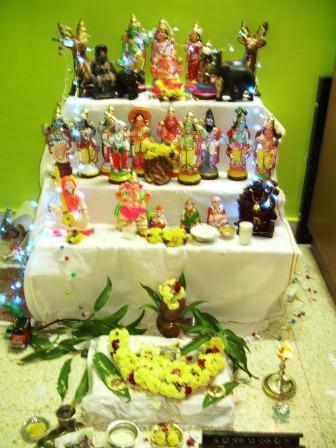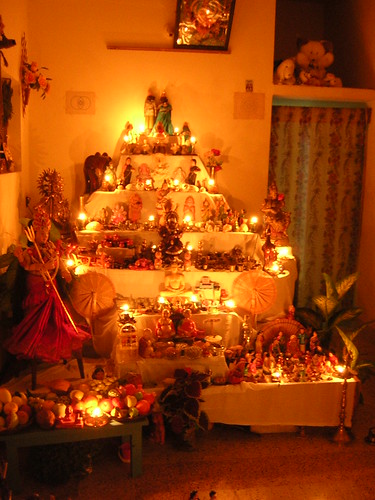Dussehra Puja
The Hindu festival of Dussehra is celebrated with religious observance. The Hindus in India celebrate the festival with great fanfare. The occasion commemorates the victory of good over evil. Therefore, it is considered very auspicious by the Hindus. Since ages, the effigies of Ravana, his brother Kumbhkarna and son Meghnath are burnt in the northern parts of India, to symbolize the victory of Lord Rama and his army over the three. Another legend says that Goddess Durga assassinated demon Mahishasura and this is the reason why, the day is celebrated as Vijayadashmi in eastern parts of the country.Dussehra consists of a number of rituals that are followed strictly by people, since ages. It is believed that by performing Dusshera pooja correctly, the Almighty showers blessings on the devotees. While the pooja is performed differently in different regions of India, the purpose of the people remains the same - to seek blessings of their deity and ensure health, wealth and prosperity all through the year. Dussehra puja can be performed by both men and women, provided they are equipped with all the supplies needed and know the correct procedure. Go through the following lines to know more about pooja on Dusshera festival.
Pooja On Dusshera Festival
Since the celebrations of Dusshera are related to the Hindu mythology, hence the puja performed on Dussehra is performed strictly according to the Hindu traditions and culture. While both men and women can perform the puja, people usually call upon a priest to perform the ritual. After providing him with all the materials required, which may include cow dung, limestone, rice, flowers, kheer and other puja items like dhoop, incense sticks, deep etc., the priest starts performing the Dussehra puja. First, he draws the image of any deity, preferably Lord Ganesh, using the cow dung. Two saucers are made out of the wet cow dung, each used for placing the pooja items such as coins, roli, fruit, jhuwara and roli.
The priest chants mantras and performs the pooja by offering flowers and prasad to the deity. Banana, jaggery, rice and radish are generally used to offer as the prasad. When the pooja is over, the priest is offered money (dakshina), while the prasad it offered to the poor. There is a tradition of offering food to the Brahmins of the locality. After attending the Dussehra puja, people start their celebrations of the day. While in north India, they would head towards the nearest Ramlila maidan. In other parts of India, typically in South India, people would indulge in the post Saraswati puja celebrations. In West Bengal, it is the time to take part in Visarjan, the ritual of immersing the idol of Goddess Durga in the nearest water body, such as river or lake.





No comments:
Post a Comment